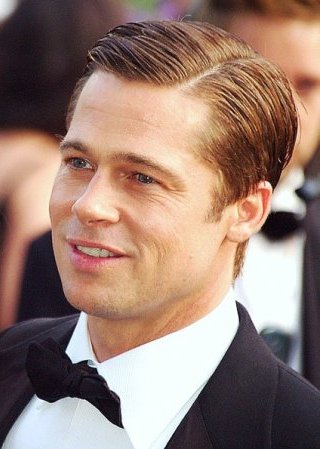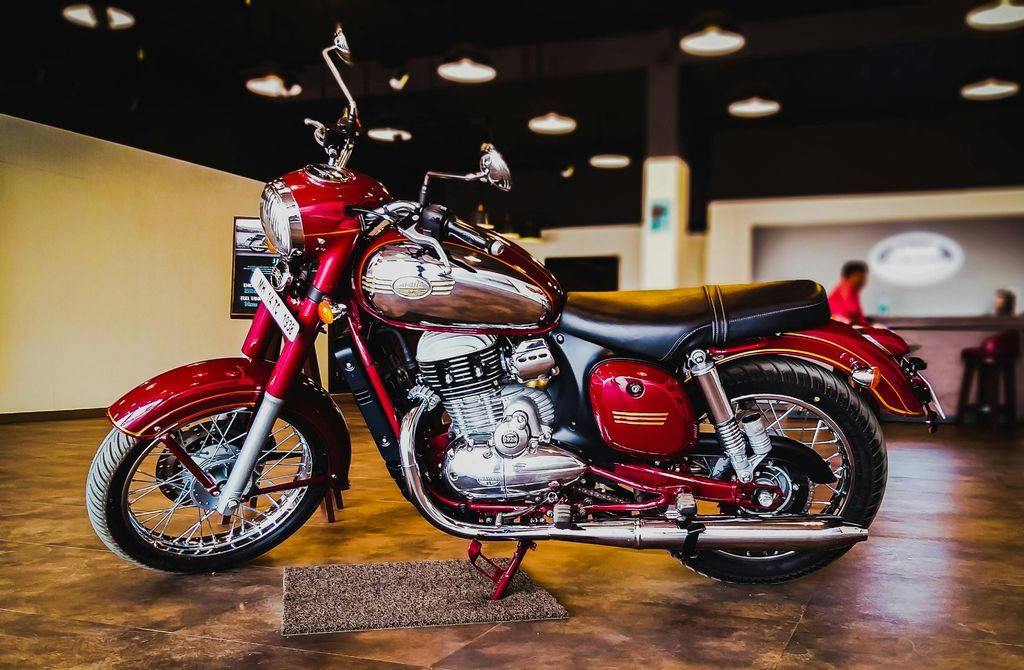
There are certain objects, people, or moments that just resonate deeply with us, becoming more than just what they are – they become symbols. These are the things we call ‘iconic,’ a term that stems from the Greek word ‘eikonikos,’ meaning an image or likeness. It’s used to describe something so widely recognized and admired that it practically stands as a representative of an entire era, genre, or concept. We’re talking about items that have significant cultural, historical, or social importance, leaving a lasting impact and influencing everything around them. Think about landmarks like the Eiffel Tower or pop culture phenomena like Michael Jackson’s glove; they encapsulate the very essence of a culture.
Now, apply that powerful idea to the world of two wheels, and you’ve got a whole new level of admiration. Motorcycles, perhaps more than any other vehicle, have long been symbols of freedom, rebellion, and innovation, encapsulating the spirit of the open road and the thrill of discovery. An iconic motorcycle isn’t just a machine; it’s a time capsule, preserving the essence of an era, reminding us of historical events, popular films, or simply the sheer joy of riding. These aren’t just bikes; they are legends that have transcended their mechanical origins to become part of our collective consciousness.
So, how does a motorcycle achieve this hallowed status? Well, it’s a winding road, involving a combination of groundbreaking design, innovative engineering, and undeniable cultural impact. Some machines break the mold with their looks, elevating industry standards. Others introduce new technologies that fundamentally change how motorcycles are built and ridden. And then there are those that simply capture our hearts, stirring up nostalgia for the good old days. We’ve gone through the history books and chatted with esteemed colleagues to bring you a curated list of some of the most iconic motorcycles ever built. Join us as we take a ride through history and look at the bikes that have defined generations and continue to inspire new riders today.

1. **Honda Super Cub (1958-Present)**Let’s kick things off with a true titan, a motorcycle so legendary that it’s not just the best-selling motorcycle in history, but the best-selling motor vehicle, period! We’re talking about Honda’s Super Cub, with over 100 million units sold since its introduction in 1958. This bike is an absolute phenomenon, and its journey to iconic status is a testament to brilliant design and smart marketing that broke all the rules.
One of the main selling points that made the Super Cub the go-to vehicle for almost anyone, especially in developing countries, was Honda’s incredibly innovative approach to advertising. Instead of solely targeting men, Honda promoted the Super Cub in women’s magazines, highlighting it as a vehicle easy enough for anyone to ride. This move shattered traditional gender barriers in marketing and opened up a massive new demographic, propelling demand through the roof.
To meet this unprecedented demand, Honda decided to build a dedicated factory in Suzuka, Japan. At the time, it was the largest motorcycle factory in the world, capable of pumping out an astounding 50,000 Super Cubs a month, firmly establishing it as the most produced motorcycle globally. Keeping the operation of the vehicle simple was key to its accessibility, leading to the development of the semi-automatic centrifugal clutch. This ingenious feature eliminated the need for a manual clutch lever, allowing riders to simply shift gears with their foot, making it incredibly user-friendly.
Technical innovations were also a hallmark of the Super Cub. It was fitted with a 50cc 4-stroke engine, a significant departure from the typical 2-stroke engines popular at the time. This choice offered superior fuel efficiency and reliability, making the Super Cub an economical and dependable choice for everyday transportation. Over the decades, the Super Cub has truly stood the test of time, and while modern iterations have brought advancements, it still proudly retains its signature classic design, proving that some legends never fade.
Read more about: The 18 Most Iconic Motorcycles of All Time

2. **Triumph Bonneville (1959-Present)**When you hear “Triumph,” you probably think of speed, and for good reason! Triumph motorcycles are famous for setting many land speed records, so it’s no surprise that the Bonneville, named after the legendary Bonneville Salt Flats in Utah, was literally built for speed. This isn’t just a fast bike; it’s a cultural icon, deeply embedded in the counterculture of the 1960s and beyond.
The Bonneville was the motorcycle of choice for a who’s who of 1960s celebrities. Imagine Bob Dylan cruising, Marlon Brando making a statement, or Clint Eastwood, James Dean, and Steve McQueen embodying cool on their Bonnevilles. These bikes weren’t just ridden; they were featured prominently in films, becoming synonymous with the era’s rebellious spirit. Even today, its appeal continues, with stars like Olivia Munn seen riding a Triumph Bonneville.
The original model, the T120, boasted a 650cc twin-cylinder engine, celebrated for its robust performance and sleek, undeniable style. What truly set the Bonneville apart and cemented its iconic status was its strategic push toward targeting a younger demographic of potential motorcycle riders. In the post-war economic boom, young people suddenly had disposable income, and what better way to spend it than on a thrilling new Triumph?
This motorcycle brings back a powerful sense of nostalgia for many. It wasn’t just a purchase; it was an experience, a rite of passage. Much like the thrill of a first kiss, one can look back fondly and remember the pure exhilaration of their first Triumph Bonneville. Its timeless design, racing pedigree, and connection to cultural legends have ensured its place as an enduring symbol of performance and youthful freedom.
Read more about: The 18 Most Iconic Motorcycles of All Time
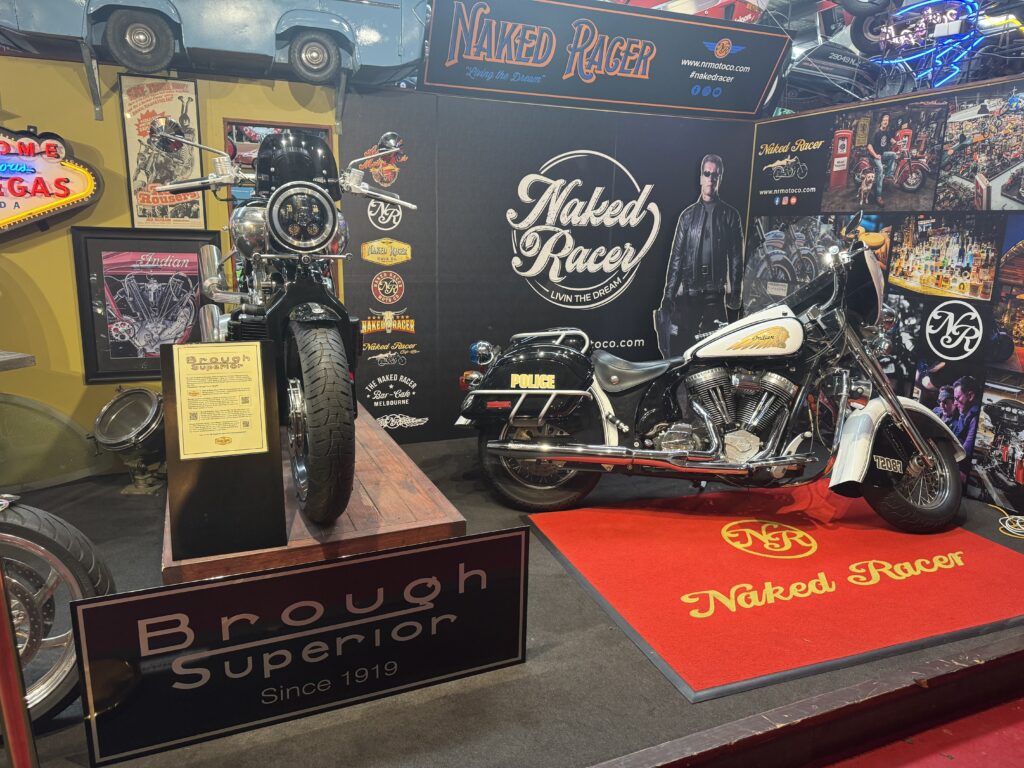
3. **Indian Chief (1922-1953, revived in 1999)**The Indian Chief is one of those timeless motorcycles that never fails to turn heads. This iconic piece of American history holds a special place in the hearts of enthusiasts, embodying a blend of tradition, innovation, and a resilient spirit. Produced from 1922 until 1953, its journey was not without its bumps, as the original company eventually faced financial issues that led to a halt in production. However, its legacy endured, marking it as a truly chief American motorcycle.
Early models of the Indian Chief were packed with innovative features that were ahead of their time. We’re talking about things like a gearbox bolted directly to the engine casing, a helical gear train replacing the typical chain drive, a wet clutch for smoother operation, and dual camshafts for enhanced performance. These weren’t just minor tweaks; these were significant engineering advancements that showcased Indian’s commitment to pushing boundaries.
In 1940, a truly distinctive design element was added that became instantly recognizable: the full-skirted fender. This bold, flowing design became a hallmark of an Indian motorcycle, giving the Chief an unmistakable profile that exuded elegance and power. These early designs and features would continue to evolve, and remarkably, after the Second World War, the Indian Chief was the only pre-war model that remained in production, highlighting its enduring appeal and reliability.
Updates kept the legend alive, with telescopic forks introduced in 1950 and an increased engine size reaching up to a commanding 1,300cc. When you think about iconic motorcycles and picture that famous “Warbonnet” logo emblazoned on the tank, you’re undoubtedly recalling the Indian Chief. Though the company faced bankruptcy after a brief revival in 1999, these classic motorcycles still remain cherished possessions and beloved memories for Indian Chief enthusiasts, testament to their unwavering appeal.
Read more about: The 18 Most Iconic Motorcycles of All Time
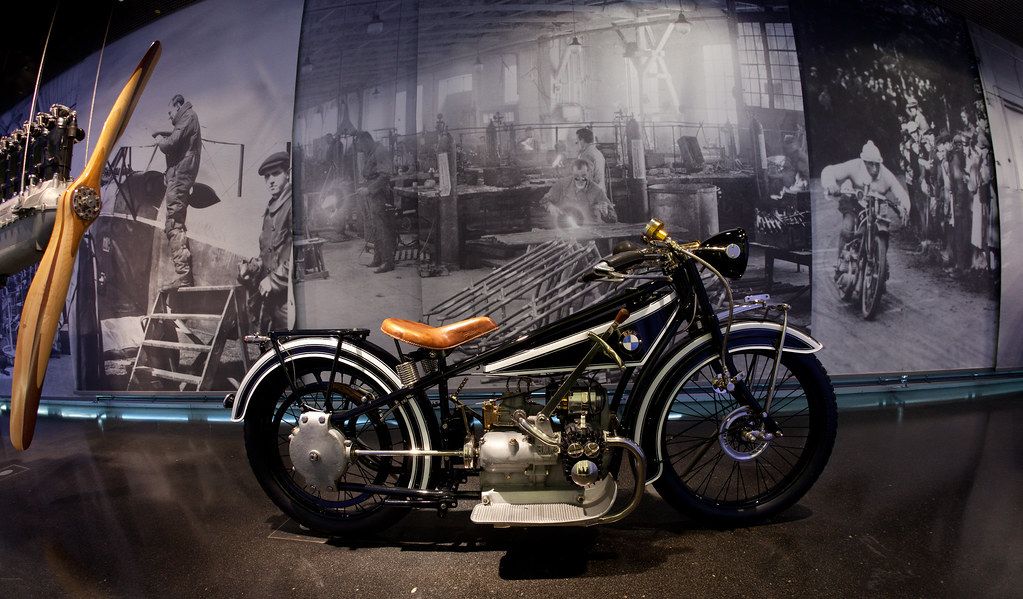
4. **BMW R32 (1923-1926)**Before BMW became the global automotive powerhouse we know today, they were building engines for the German air force in World War I. But then, in 1923, something truly groundbreaking happened: the BMW R32 rolled out, marking the company’s first successful motorcycle and laying the fundamental groundwork for all its future two-wheeled endeavors. Produced from 1923 to 1926, it was a sensation when unveiled at the Berlin Motor Show and later showcased at the Paris Motorcycle Show.
The R32 was unlike any other motorcycle manufactured at the time, setting new standards for design and engineering. It came equipped with a 494cc M2B33 flat-twin, or “boxer,” air-cooled four-stroke engine paired with a three-speed manual transmission. This setup put out a respectable 8.5 horsepower at 3,200 RPM and could hit a top speed of a whopping 59 mph – quite impressive for the era!
A truly interesting and novel feature that one cannot overlook when discussing the R32 was its unique shaft drive system, which stood out when chain drives were the norm. This design provided a cleaner and more reliable power delivery. Furthermore, its recirculating wet-sump oiling system was a major advancement, being superior and significantly cleaner than the total-loss oiling systems found on most other motorcycles of the time. This attention to detail in engineering truly made it shine.
Designed with a low center of gravity and a short 54-inch wheelbase, paired with 26-inch wheels, the R32 was conceived as a safe touring motorcycle, capable of handling rougher terrain with ease and stability. This machine wasn’t just a bike; it was a blueprint, with its flat-twin/boxer design mated to a shaft final drive becoming the cornerstone for the majority of BMW’s subsequent two-wheel models. Even after 100 years, the BMW R32 is still considered incredibly cool and a highly desirable motorcycle, a true testament to its timeless aesthetic and engineering foresight.
Read more about: The 18 Most Iconic Motorcycles of All Time

5. **Harley-Davidson Fat Boy (1990-Present)**Alright, let’s be honest, we’ve all seen that iconic movie scene in “Terminator 2,” where the T-800, played by the one and only Arnold Schwarzenegger, rides the Harley-Davidson Fat Boy in relentless pursuit of a young John Connor. That motorcycle isn’t just a prop; it absolutely symbolizes the film’s raw, rugged, and powerful nature, just as much as the chrome-laden T-800 itself. It’s a cinematic legend that instantly cemented its place in pop culture.
First launched in 1990 by the legendary Willie G. Davidson, the Harley-Davidson Fat Boy quickly roared its way into being one of the best models in the company’s storied history. Now, you might be wondering where that intriguing name, “Fat Boy,” came from. While the rumor mill has churned out various theories, Willie G. himself claims the name simply stuck due to the motorcycle’s undeniably massive, broad, and “fat” look, a descriptor that perfectly captures its imposing presence.
Over the years, this iconic motorcycle has seen its fair share of design and technical modifications, always staying true to its powerful ethos. It started with a robust 1340cc engine in 1990, which then grew to a 1,450cc twin-cam engine in 1999. The Fat Boy truly lived up to its name and got even “fatter” in 2007, with its engine increasing to 1,584cc and the transmission upgraded to a smooth six-speed.
Following the continuous “Fat” theme, new models released in 2018 came equipped with a formidable ‘Milwaukee Eight’ 1746 or 1868cc engine, complemented by even fatter wheels, ensuring its powerful and distinctive look. The Harley-Davidson Fat Boy just keeps on getting bigger and more commanding, solidifying its place as a quintessential American cruiser. It’s even been immortalized as a Lego toy, which, let’s be real, is a pretty cool achievement for any machine!
Read more about: The 18 Most Iconic Motorcycles of All Time
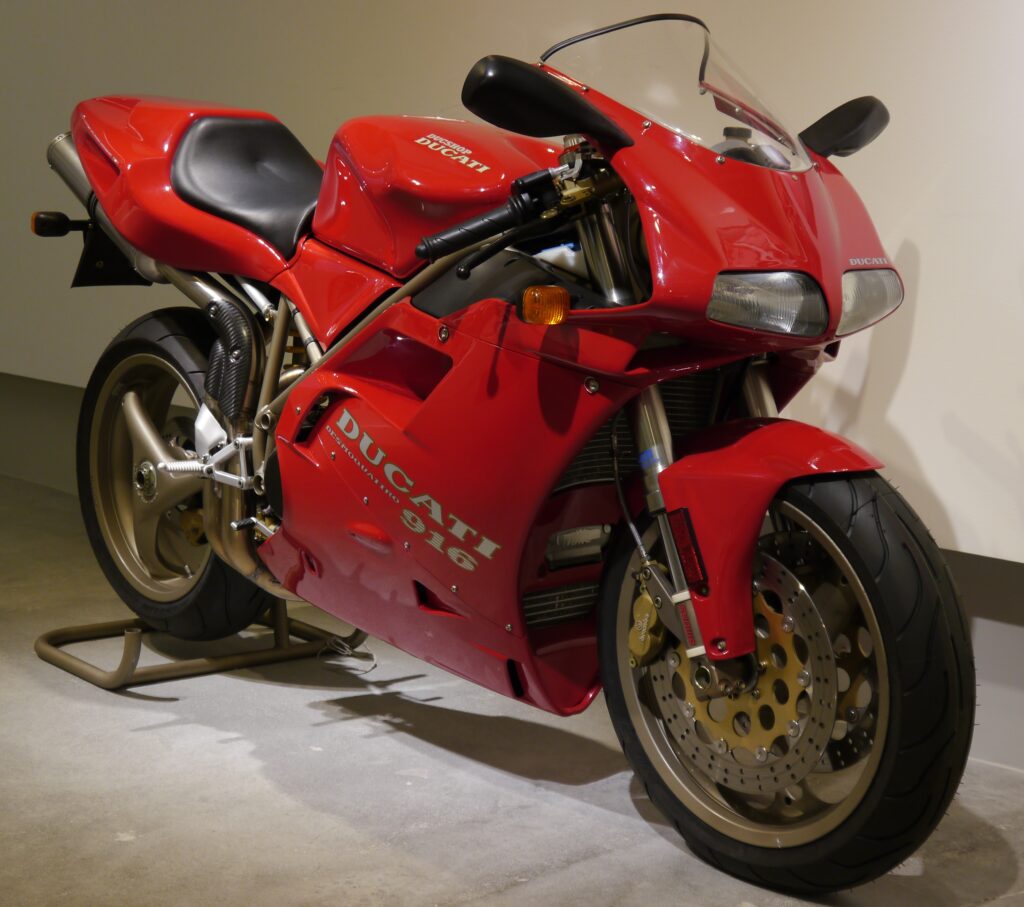
6. **Ducati 916 (1994-1998)**When the conversation turns to superbikes, there’s one name that immediately springs to mind, often referred to as the “Michelangelo of Motorcycles”: the Ducati 916. Produced from 1994 to 1998, this machine wasn’t just a bike; it was an absolute work of art, a masterpiece designed by the visionary Massimo Tamburini. In fact, Motorcycle News Magazine went so far as to call it “the most beautiful bike of the last 50 years” in 2014, and honestly, it easily made our own list of head-turning motorcycles that defined the 90s.
Beyond its breathtaking aesthetics, the Ducati 916 was a performance powerhouse. It featured a liquid-cooled 916cc V-twin engine that pumped out around 114 horsepower at 9000 rpm, capable of hitting max speeds of up to 161.6 mph. This raw power was expertly complemented by a tubular steel Trellis frame, which provided incredible rigidity and feedback. Adding to its agility and precise handling were a single-sided swingarm and a USD fork on the front end, making it a dream to ride on both road and track.
The 916’s success wasn’t confined to its stunning looks or impressive specs alone. It absolutely dominated on the track, winning the World Superbike Championship three years straight, which not only cemented its racing pedigree but also significantly contributed to Ducati’s commercial path and burgeoning reputation. The fact that even non-motorcycle enthusiasts fawned over this motorbike speaks volumes about its universal appeal and design excellence.
The legacy of the 916 lives on, too. Its successors, the Ducati 996 and 998, were heavily influenced by the 916’s iconic design, proving its enduring impact. Today, many collectors and enthusiasts eagerly wish to get their hands on what is arguably the most iconic and revered motorcycle ever produced by the Italian manufacturer. While some of the other rarest Ducati motorcycles ever built might offer it some competition, the 916’s cultural and financial impact on motorcycling as a whole can truly never be understated.
Read more about: The 18 Most Iconic Motorcycles of All Time
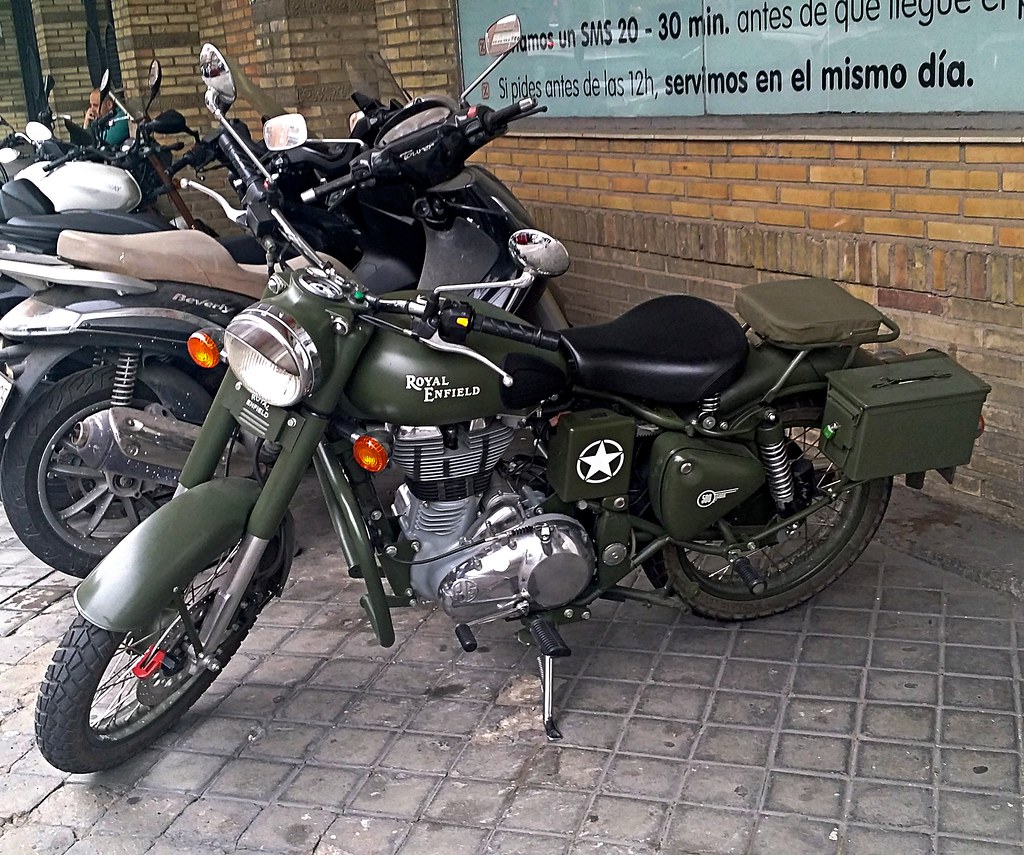
7. **Royal Enfield Classic 500 (2008-2020)**The Royal Enfield motorcycle company boasts a rich and storied history, and among its many revered models, the Classic 500 stands out as one of the most iconic. Produced from 2008 to 2020, this bike is a deliberate and charming throwback, with a design that exudes character and is directly reminiscent of post-war British motorcycles. It’s a machine that understands the power of nostalgia and embraces it wholeheartedly.
The Royal Enfield Classic 500, specifically models built up to 2020, came equipped with a 499cc single-cylinder four-stroke engine, delivering a comfortable 27.2 horsepower at 5,250 rpm, paired with a reliable 5-speed transmission. What truly makes it iconic, though, is its unwavering commitment to its old-school aesthetic. It meticulously kept its timeless paint design, a classic bobber-style seat, and that distinctive peashooter exhaust – all elements that instantly transport you back to simpler, perhaps more romantic, times of motorcycling.
This bike isn’t about raw, intimidating power; it’s about the pure joy of the ride and ease of handling. It’s relatively lightweight, tipping the scales at around only 412 pounds, which makes it incredibly easy to maneuver and operate, whether you’re navigating city streets or winding country roads. It’s also a remarkably tough motorcycle, capable of traversing challenging terrain, even tackling famous routes like South America’s rugged Gaucho and Dakar trails with surprising capability.
Because its horsepower isn’t overly aggressive, the Classic 500 is often affectionately considered a “gentlemen’s” bike, appealing to riders who appreciate a more relaxed, refined, and stylish riding experience. Some might say the Royal Enfield Classic 500 seems to be stuck in the past, and you know what? That’s precisely the point, and its greatest strength. It’s a motorcycle that has steadfastly held onto its classic charm and traditional values, even as over a hundred years of technological development have swept the industry, proving that sometimes, classic is simply best.
Now that we’ve journeyed through some foundational icons that set the stage, let’s accelerate into the next gear and explore more game-changers that truly reshaped the motorcycle landscape. This section is all about the trailblazers that have dominated the racing circuit, ignited the spirit of adventure, and pushed the boundaries of modern sportbike engineering, leaving an undeniable mark on both the industry and the riders who love them. From groundbreaking speed machines to rugged companions built for the wild, get ready to dive into the legacies of these incredible two-wheeled legends.
Read more about: The 18 Most Iconic Motorcycles of All Time
/cloudfront-us-east-1.images.arcpublishing.com/octane/VYCBWWIREBFMJPH77X4G4LBYFI.jpg)
8. **Suzuki Hayabusa (1999-Present)**Every motorcycle enthusiast worth their salt should know the name Suzuki Hayabusa. This machine is an absolute legend, capable of sometimes exceeding an astounding 186 mph, and it’s aptly named after the fastest bird on the planet, the peregrine falcon. When it was first introduced in 1999, the Hayabusa didn’t just make an entrance; it catapulted itself into iconic status almost overnight, becoming a benchmark for speed and performance.
Its design aesthetics were sleek, curvaceous, and, most importantly, honed in on aerodynamics to achieve both blistering speed and remarkable stability. This meticulous engineering quickly made it a firm favorite among serious motorcyclists and drag racers alike, who sought a machine that could deliver unparalleled performance on the strip and the open road. The first generation, produced from 1999 to 2007, featured a potent 1,298cc inline-four engine, pumping out a thrilling 172.5 horsepower.
Over the years, the Hayabusa has continued its reign, with the second generation (2008-2020) boasting larger 1,340cc engines and an impressive 195 horsepower. Even the most recent third generation, launched in 2021, has masterfully maintained that iconic design, proving that some bikes are just too perfect to mess with. The 1999 and 2000 models, in particular, remain highly sought after by collectors for their unrestricted speed. Touted as inventing a new motorcycle category, “Ultimate Sport,” the Hayabusa, also known as the GSX1300R, has unequivocally solidified its legacy as one of the fastest and most iconic motorcycles ever built, continuing to inspire awe and adrenaline.
Read more about: The 18 Most Iconic Motorcycles of All Time

9. **Honda CB750 (1969-Present)**Get ready to meet a true pioneer! First introduced in 1969, the Honda CB750 is often celebrated as “the world’s first superbike,” and it’s also widely recognized as the original Universal Japanese Motorcycle (UJM). Back in its heyday, the bike’s design and engineering were absolutely unparalleled, completely challenging what a motorcycle could be and forcing competitors worldwide to step up their game. In many ways, the CB750 didn’t just kickstart a new era; it ignited the entire golden age of motorcycle development.
The heart of the CB750 was its robust 736cc, SOHC, air-cooled, inline four-cylinder engine, which effortlessly produced 67 horsepower at 8,000 rpm. But it wasn’t just about raw power; this machine was packed with advanced features that were revolutionary for its time. It boasted a smooth five-speed transmission, a convenient electric starter that changed the game for daily riders, and, a crucial safety upgrade, front disc brakes. These innovations collectively set a new standard for performance, reliability, and rider convenience, truly distinguishing it from its contemporaries.
Adding to its impressive trophy case, the Honda CB750 has been named one of Discovery Channel’s “Greatest Motorbikes Ever” and proudly holds a place in the AMA Hall of Fame Classic Bikes. While production ceased in 2007, its legend only grew stronger. Today, it’s a highly sought-after prize by collectors and enthusiasts alike, with meticulously restored models fetching some seriously decent prices at auction. In fact, a pristine CB750 from 1968 once sold for a massive $263,725, cementing its status as one of the most expensive Japanese motorcycles ever sold at auction and a testament to its enduring significance.
Read more about: The 18 Most Iconic Motorcycles of All Time
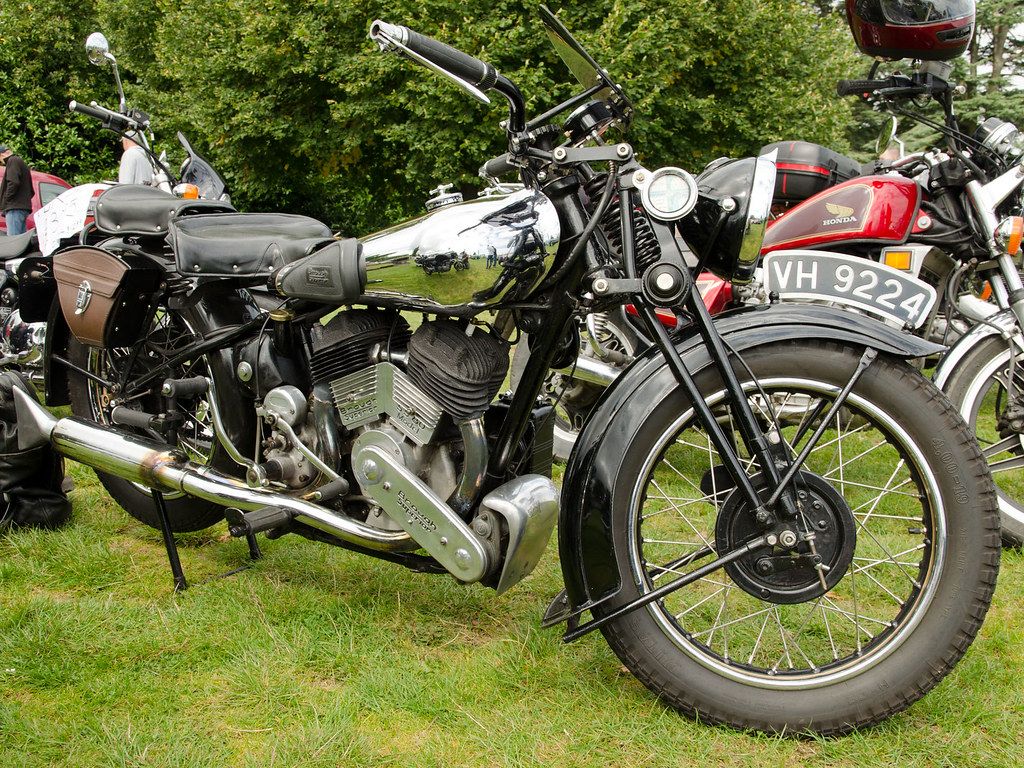
10. **Brough Superior SS100 (1924-1940)**Prepare to be introduced to what many affectionately call the “Rolls-Royce of Motorcycles” – the legendary Brough Superior SS100. Produced between 1924 and 1940, this magnificent machine wasn’t just considered fast; it was heralded as the fastest and most luxurious motorcycle ever built in its era. It holds the distinguished title of being the very first bike to break the astonishing 100 mph world record, a feat that firmly cemented its place in motorcycling history.
The SS100 was not just a motorcycle; it was a pure work of art, meticulously hand-built to order with an unparalleled attention to detail that bordered on obsession. This bespoke craftsmanship, combined with its groundbreaking performance, instantly elevated its status far beyond mere transportation. The rarity of this bike only adds to its iconic allure, as only a mere 383 units were ever produced. Today, it stands as a highly sought-after and prized possession for collectors worldwide, a testament to its timeless elegance and engineering excellence.
Its features were remarkably ahead of its time, showcasing a visionary approach to rider comfort and customization. Imagine having adjustable footrests, rearview mirrors, and even the ability to fine-tune the height and angle of the saddle back in the 1920s! This was the true symbol of luxury on two wheels, and it was famously ridden by prominent figures such as T.E. Lawrence, better known as Lawrence of Arabia. The Brough Superior SS100 stands as an enduring symbol of pre-war British engineering excellence, a masterpiece that continues to captivate and inspire.
Read more about: The 18 Most Iconic Motorcycles of All Time

11. **BMW R 80 G/S (1980)**In 1980, BMW didn’t just introduce a new motorcycle; they created an entirely new category and sparked an entire movement with the Gelände Sport, or G/S. (For those wondering, the acronym was later streamlined to GS, which we all know and love today!) This groundbreaking maxi-travel bike was designed with one audacious goal: to go anywhere, absolutely anywhere. And it did exactly that, proving to be so revolutionary that it’s credited with saving BMW Motorrad from financial extinction. Even now, decades later, it’s still considered the ultimate adventure bike, capable of effortlessly crossing paddocks, states, or even entire countries.
The R 80 G/S quickly proved its mettle in the most grueling environments. Its remarkable success in the punishing Paris-Dakar Rally cemented its reputation for rugged durability and incredible off-road capability, making it a legend in the world of endurance racing. But its cultural impact soared even higher when it took a starring role in Ewan McGregor’s hugely popular television series, “Long Way Round.” This show introduced a new generation of riders to the thrilling possibilities of adventure motorcycling, with the G/S as their trusty steed.
With generations of happy adventure riders singing its praises, the G/S stands as the most important motorcycle BMW has ever built. It redefined what a motorcycle could be, blending off-road prowess with touring comfort in a way no bike had before. This machine wasn’t just about getting from point A to point B; it was about the journey, the exploration, and the unbridled spirit of adventure. Its legacy is etched into every dusty trail and open highway, continuing to inspire riders to seek out their own long way around.
Read more about: The 25 Most Legendary Motorcycles of All Time
12. **Suzuki GSX-R750 (1985)**When you talk about Suzuki’s monumental contribution to superbike history, one name immediately springs to mind: GSX-R. The GSX-R750, bursting onto the scene in 1985, wasn’t just a new model; it ignited a long and phenomenally successful road for the company, a path paved with countless race wins and championship titles around the globe. This machine truly changed the game, becoming an instant icon for its groundbreaking approach to performance.
What made the GSX-R750 so revolutionary was its unprecedented proximity to professional race bikes. Prior to its arrival, riders had never before been able to purchase a production machine that was so incredibly close in specification and feel to what the pros were racing on the tracks of the world. Suzuki brought genuine race-bred technology and performance directly to the streets and the showrooms, bridging the gap between elite competition and everyday enthusiasts. This proved to be an enormously successful enterprise, forging a new standard for sportbikes.
The impact was undeniable, securing Suzuki’s place as a dominant force in the superbike segment. The GSX-R lineage continues to thrive today, a testament to the enduring appeal and engineering excellence of that original 1985 model. Despite the 750cc class long being considered ‘deceased’ by many in the industry, Suzuki still proudly manufactures the GSX-R750, a living legend that refuses to fade into history. It continues to capture the hearts of riders who crave that pure, unadulterated race bike feel, straight from the factory floor.

13. **Honda CBR900RR FireBlade (1992)**Cast your minds back to the early 1990s, when Honda engineer Tadao Baba, often revered as the “Father of the Fireblade,” pulled off something truly incredible. He convinced the Honda board to venture into uncharted territory and create a new class of sportbike. At a time when the focus was increasingly on razor-sharp, uncompromising race replicas, Baba envisioned a machine that perfectly balanced the handling prowess and sheer power that riders *actually* needed and craved for real-world road riding. Thus, the legendary Honda CBR900RR was born, and the motorcycling world would never be the same.
The FireBlade, as it was named in all countries except the United States until 2020, wasn’t about simply chasing the highest horsepower figures. Instead, its genius lay in its holistic approach to performance, meticulously optimizing every component for lightness and agility. Honda’s engineers achieved a remarkably compact design, delivering a bike that felt incredibly flickable and manageable despite its potent engine. It redefined what a large-capacity sportbike could feel like, proving that supreme performance didn’t have to come at the cost of rideability or balance. This philosophy instantly resonated with riders who desired a machine that excelled both on the track and on twisty backroads.
The CBR900RR FireBlade’s impact was nothing short of revolutionary. It completely changed the way the world looked at sportbikes, serving as the undeniable catalyst for the modern superbike category we know today. Before the FireBlade, the 750cc four-cylinder machines reigned supreme in the sportbike hierarchy. But Honda’s visionary creation demonstrated that lighter, more powerful, and exceptionally balanced machines were the future, ultimately paving the way for the 1000cc monsters that now dominate the superbike landscape. It remains a true icon, celebrated for its perfect blend of power, precision, and pioneering spirit.

14. **Yamaha YZF-R1 (1998)**When we talk about pure, unadulterated Yamaha sportbike performance, the YZF-R1 immediately takes center stage. This machine, unleashed upon the world in 1998, didn’t just offer improvements; it brought levels of performance and a revolutionary design approach that were frankly unheard of for production motorcycles at the time. It permanently changed how sportbikes were conceived, designed, and packaged, immediately establishing itself as a benchmark for the modern era.
The genius behind the R1’s groundbreaking design was Yamaha designer Kunihiko Miwa. He dared to challenge conventional wisdom by mounting the gearbox output shaft *above* the crankshaft, rather than in a traditional inline configuration. This brilliant innovation led to the creation of the world’s first vertically-stacked gearbox, an engineering marvel that allowed for incredibly tighter packaging throughout the entire machine. This compact design flowed into every area of the bike, creating what Miwa himself famously coined as the first truly “no compromise” superbike.
This meticulous attention to compact design, combined with its powerful engine and razor-sharp handling, immediately captured the imaginations and opened the wallets of riders worldwide. The Yamaha YZF-R1 wasn’t just another fast bike; it was a perfectly integrated, high-performance package that set new standards for agility, power delivery, and rider feedback. Its radical design and performance benchmarks continue to influence sportbike development to this day, ensuring its place as an enduring icon that redefined what a liter-class sportbike could truly achieve.
Read more about: 18 Motorcycle Legends: The Most Memorable Bikes in History
And there you have it – a whirlwind tour through some of the most iconic motorcycles ever to grace our roads and tracks! From pioneering engineering marvels that broke speed records to cultural touchstones that defined generations, and from bikes that reshaped racing to those that unlocked the thrill of global adventure, each machine on this list tells a unique and compelling story. These aren’t just pieces of metal and rubber; they are legends, symbols of passion, innovation, and the enduring spirit of the open road. So, whether you’re a seasoned rider or simply an admirer, take a moment to appreciate the incredible legacy these bikes have forged, continuing to inspire countless dream rides and thrilling journeys for decades to come. What an exhilarating ride it’s been!


